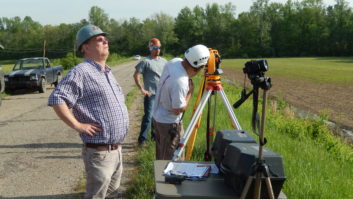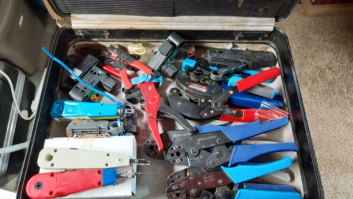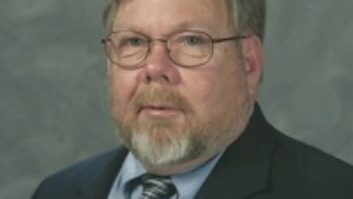SEPT. 1, 2087 — We sadly report the death of Byron Greenie. He was the last of his kind: the last broadcast engineer.

iStockphoto/mstay
You are probably asking, “What is a broadcast engineer?” And what an excellent question it is. I asked my holographic Kno-It-All and was told that this was a person whose job it was to keep a radio or television station operational, to keep everything working.
This may come as a shock; but there was a time when machines didn’t fix themselves or replace themselves as they do now. There were people who actually did this work of fixing things.
They often would carry a container filled with objects required to do the fixing. These objects were called tools. There were many kinds of tools. Some were just to open the box that the device lived in. Some tools tested and verified the performance of different parts of a device.
Most of these boxes were connected with copper conductors called “cables” or sometimes with glass conductors called “optical fiber.” Engineers like Byron would know how to make the connections between boxes, and what kind of connection to make.
Wireless was just beginning to be used, and, of course, subdimensional signaling, like we have now, was completely unknown.
Still on call
Often these devices would perform tasks on their own, crudely recording or reproducing sound or pictures. Some devices would have “brains” inside them to make simple decisions about things. Most often, the memory for these machines was built into the device itself.
This was before the advent of the World Memory — which, as you know, was built in Siberia starting in 2030 — and its twins in Antarctica and at one of the Lagrange Points in space. (They used to call it “outer space.” Isn’t that quaint?)
Byron did this job for more than 50 years, starting out with radio stations (wireless, low- and mid-frequency audio spreaders). By the time of his retirement in 2045, he worked mostly with a number of museums, notably including the Museum of Sound and Image in Mumbai, India, and the Institute for the Preservation of Ancient Machinery in Ouagadougou, Burkina Faso.
He was 107 at the time of his death, and there has been speculation that his continued use of lead in a process called soldering might have led to his demise at so young an age. He steadfastly refused all nanobio upgrades, and actually was a leader in the resistance movement against machine-human hybrids.
Congrats Steve Steve Lampen

The Society of Broadcast Engineers has named Steve Lampen, CBRE, its SBE Educator of the Year.
“Lampen utilizes his travels promoting the Belden product line, as an opportunity to understand what broadcast engineers need,” SBE wrote.
“Lampen educates industry members about his expertise in dozens of topics at Ennes sessions, NAB and SBE chapter meetings while traveling an average of 300 days per year. Steve strives to make his presentations, which have been an anchor for Ennes workshops for 10 years, educational, entertaining, accurate and useful. As a successful author Lampen wrote ‘The Audio-Video Cable Installer’s Pocket Guide’ published by McGraw-Hill, and his regular column ‘Wired for Sound’ appears in Radio World.”
Lampen joins Charles “Buc” Fitch and John Bisset as Radio World contributors who have received the SBE Educator of the Year Award in recent years.
He’s still on call, though. His DNA has been preserved, and Clōnz Inc. has put him on their short list in case any of the ancient machines cease working and he is needed again.
Thanks
The world has changed in so many ways since Byron began his career. He saw the rise of the SuperNet, and the first and second war between Mankind and Technology.
In fact, one reason you probably never heard of Byron is that he sided with technology during the Techno War 1, for which he was branded a traitor and spend a dozen years in suspended animation. After revival, he transferred to Memory 3 (the Lagrange section of the World Memory), but reports mention that this was as much to isolate himself from humanity as to allow him to work. After 20 years in space, he returned to Terra Firma, where his relationship with the museums I listed began.
And yet everything we can find out about him mentions what a nice and easygoing person he was. He got along as well with humans as he did with machines, which, you must admit, is remarkable even by today’s standards.
Perhaps we should pause a second and think not just about Byron Greenie, but about all those people who used to keep things working. Without them, we would not have the world we know today. Thanks, Byron.












